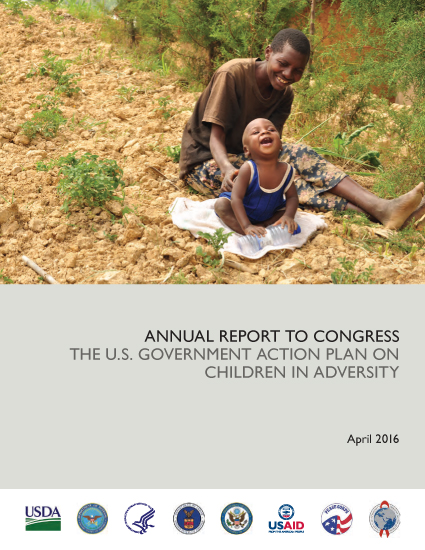Millions of children in low- and middle- income countries around the world are growing up in adverse environments, habitually suffering from ill health and disease, chronic undernutrition, deprivation, abuse, neglect and exploitation.1 Children are also excessively affected by violence, with a study published in the February 2016 issue of Pediatrics indicating that more than half the world’s children had experienced violence during the year prior to the study.2 In the most severe circumstances, children live without permanent or protective care, in abusive living situations, on the streets or in inadequate institutional settings, or are subjected to sex trafficking, conscripted into armed groups, or exploited for labor. Children consistently exposed to cumulative, toxic stresses inherent to these circumstances can suffer from health difficulties and cognitive, socio-emotional, and other developmental delays and ultimately fail to achieve their full potential. Developmental deprivations and traumatic experiences of this nature can inhibit learning, constrain capacity to build relationships, and reduce a child’s potential to mature into a productive adult member of society (Fergusson & Horwood, 2003). These challenges, predictably, can also significantly compromise a country’s social and economic progress. Annex 1 provides key statistics on children in adversity.
This is the eighth annual report on Public Law (PL) 109-95, The Assistance for Orphans and Other Vulnerable Children in Developing Countries Act. Public Law (PL) 109-95 was signed into law in 2005 to promote a comprehensive, coordinated and effective response by the U.S. Government to the urgent needs of the world’s most vulnerable children. This report is submitted on behalf of U.S. Government agencies involved in the provision of assistance to vulnerable children around the globe, the implementation of research on how to improve the development outcomes and health status of this population, and the promotion of policies to sustain improvements in child welfare. It provides a summary of the significant work undertaken by U.S. Government agencies over the past year and outlines progress made to date under the Action Plan on Children in Adversity (APCA) through Calendar Year (CY) 2015, both by Objective as well as in the six priority countries of Armenia, Cambodia, Colombia, Moldova, Rwanda and Uganda.








Comment
Make a general inquiry or suggest an improvement.